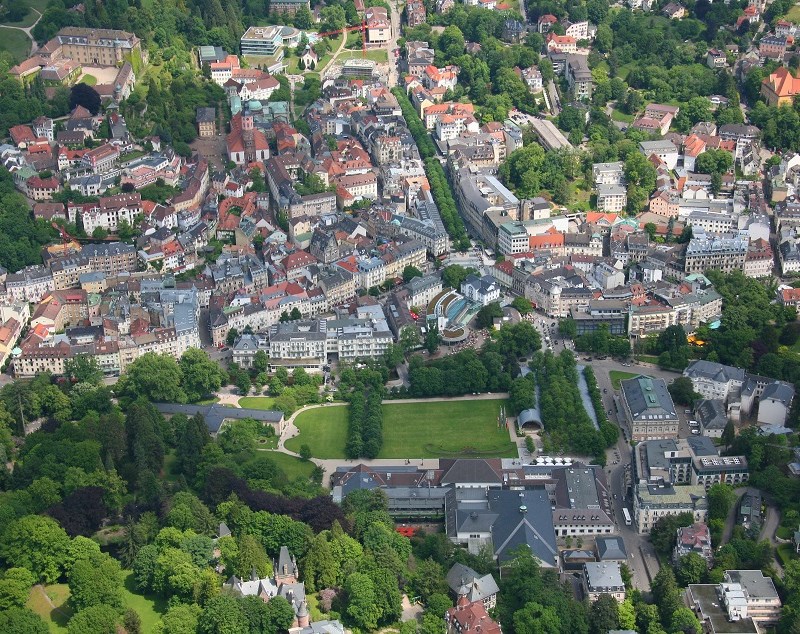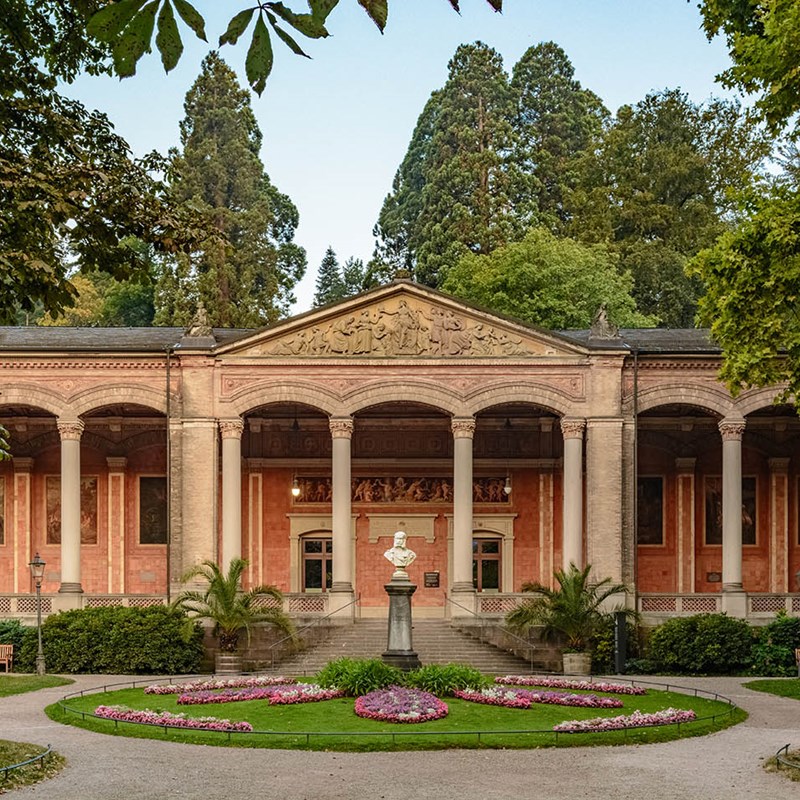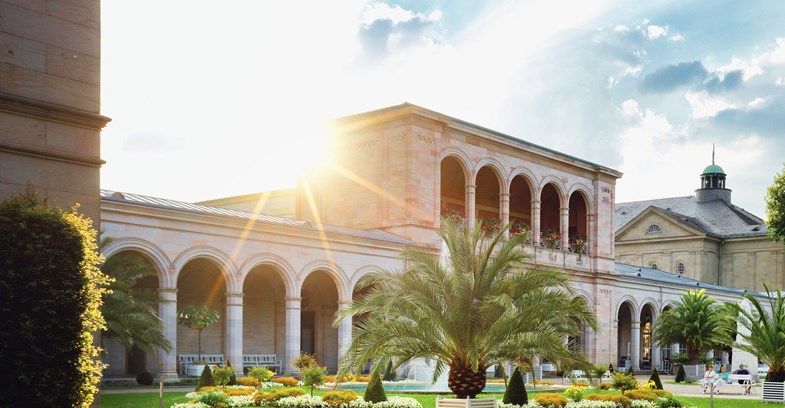Baden-Baden, GERMANY: Summer Capital of Europe
Baden-Baden, the ‘Summer Capital of Europe’, was patronised by the ruling and cultural elite of nineteenth century continental Europe. Located on the western edge of the Black Forest, it became one of Europe’s largest and most fashionable spas with an unbroken tradition of using mineral water for healing from antiquity to the present. Reflected by the separate spa quarter, newly developed across the River Oos from the old town, it was here, in the Kurhaus and Casino, that Baden-Baden acquired a worldwide reputation as the supreme example of the German gaming spa. It was also a place of inspiration for major artists and works of universal significance. Today, balneological treatments and bathing continue with great popularity in both historic and new thermal establishments, while an outstanding tradition of music and theatre is vibrantly sustained.

Baden-Baden Pump Room

Historic Urban Landscape of the ‘Great Spa’
The spatial plan of the nominated property can be divided into:
- The old town spa district, where the thermal springs are located (and the ancient Roman bath ruins), including the grand and monolithic Friedrichsbad.
- The ‘new’ spa district of the late-eighteenth century and the first half of the nineteenth century (to the west of the city walls), to which spring water was piped, and which includes the principal ensemble of the Kurhaus, pump room, casino, theatre and boutiques set in open land.
- The Lichtentaler Allee historic landscape park and arboretum along the west bank of the modelled stream of the Oos and lined with historical palace hotels on the east bank.
- The planned town expansion of the Lichtentaler Vorstadt with its Patte d’Oie plan and churches.

